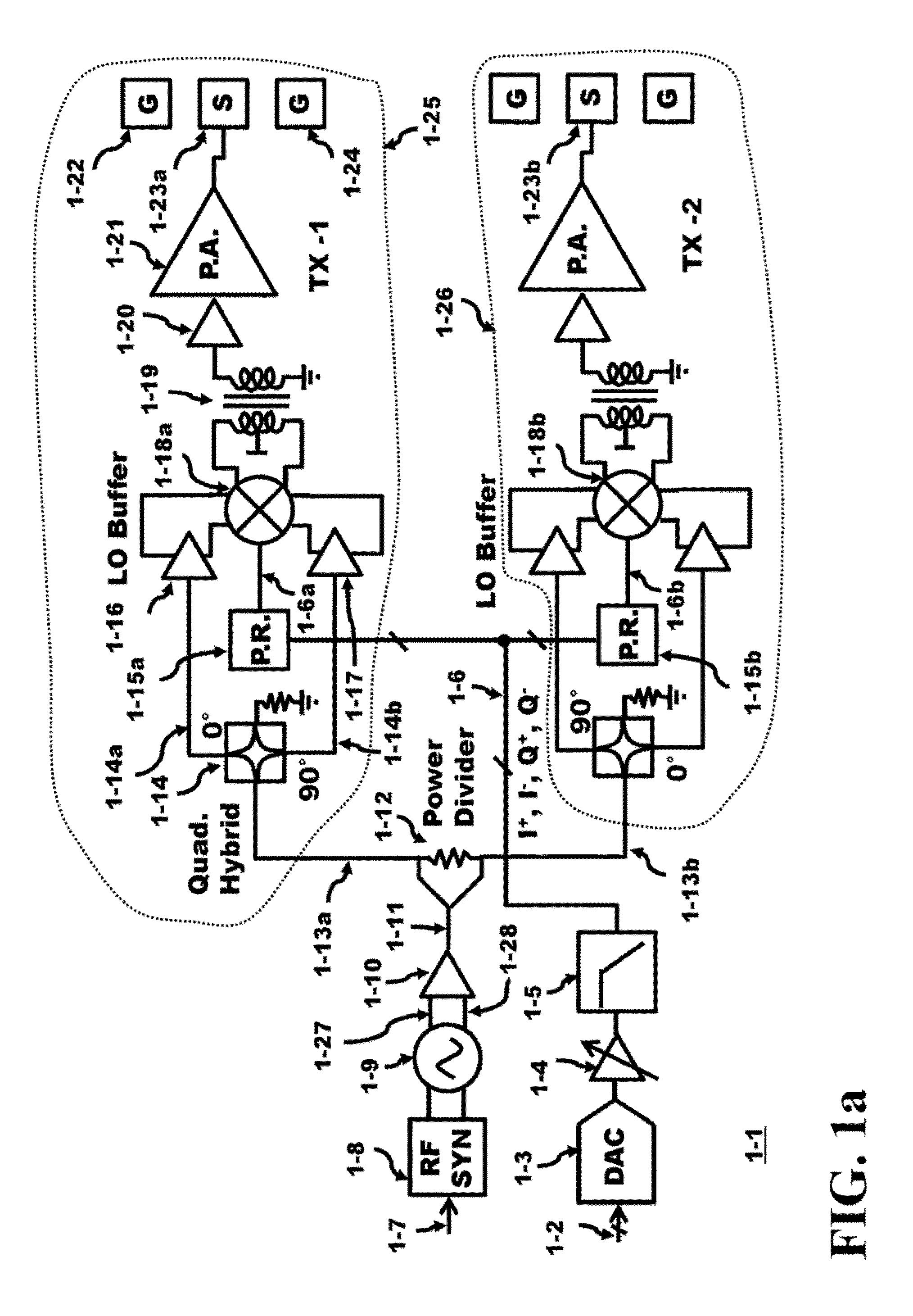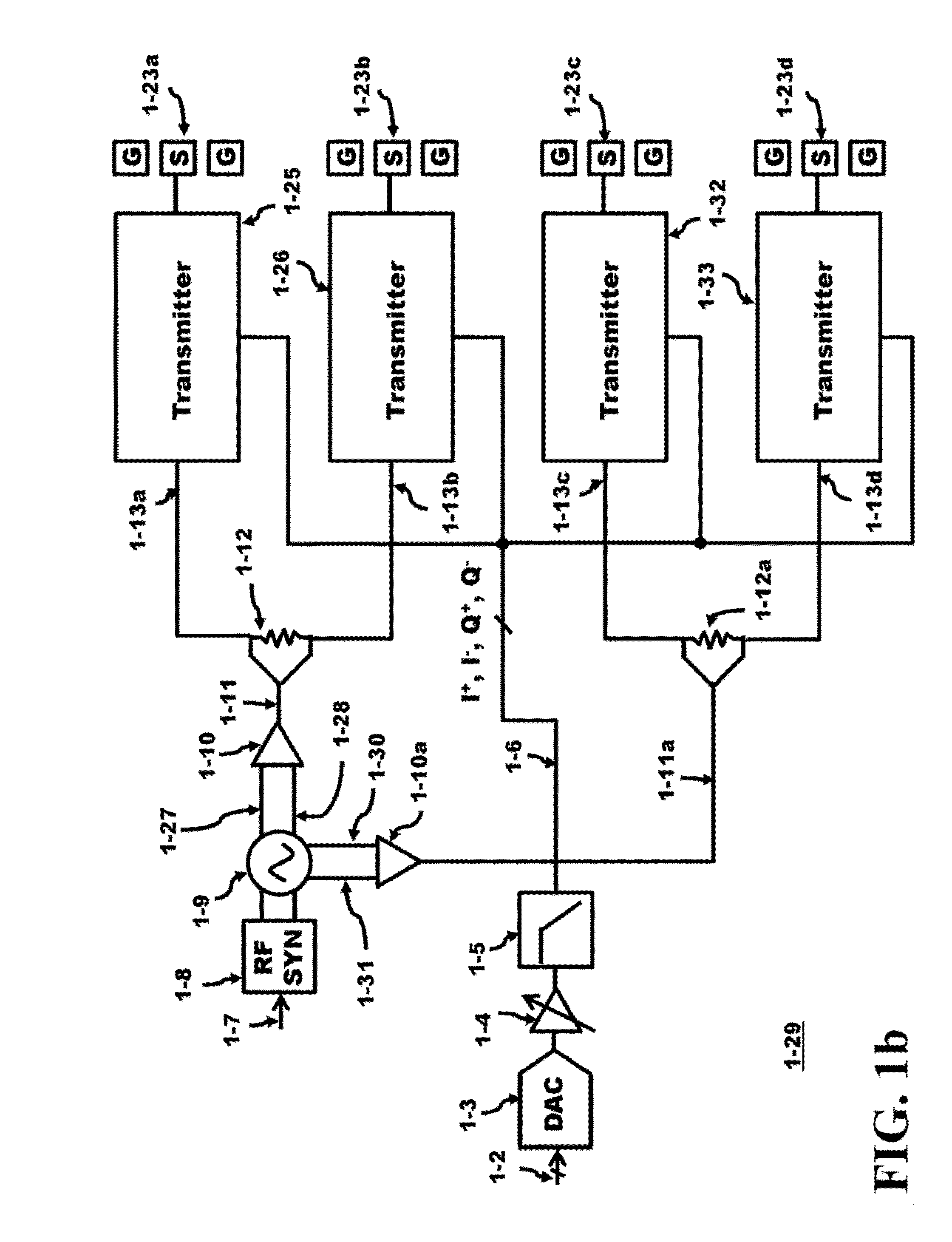Method and apparatus for a clock and signal distribution network for a 60 GHz transmitter system
a technology of clock and signal distribution network, which is applied in the direction of generating/distributing signals, pulse techniques, instruments, etc., can solve the problems of reducing the purity of the desired signal being transferred, and achieve the effect of increasing the number of transmitters, less power, and less area
- Summary
- Abstract
- Description
- Claims
- Application Information
AI Technical Summary
Benefits of technology
Problems solved by technology
Method used
Image
Examples
Embodiment Construction
[0034]FIG. 1a illustrates 2 two element beamforming transmitter 1-1 that is applicable for a 60 GHz system. For an example of a single transmitter circuit, see U.S. patent application Ser. No. 13 / 243,986, filed Sep. 23, 2011 by Zaw Soe under the title, “Method and Apparatus of Minimizing Extrinsic Parasitic Resistance in 60 GHz Power Amplifier Circuits” commonly assigned herewith, describes a transmitter circuit and techniques, suitable for driving an antenna and is incorporated herein by reference in its entirety. The digital baseband signal 1-2 is applied to the DAC (Digital to Analog Converter) 1-3. The DAC converts the digital signal to an analog signal. The variable gain amplifier 1-4 applies the amplified signal to the low pass filter 1-5. The bussed output 1-6 of the low pass filter 1-5 provides the I+, I−, Q+, and the Q− baseband signals. The in-phase I baseband signals are 90° out of phase with the quadrature Q baseband signals. The I− baseband signal is 180° out of phase w...
PUM
 Login to View More
Login to View More Abstract
Description
Claims
Application Information
 Login to View More
Login to View More - R&D
- Intellectual Property
- Life Sciences
- Materials
- Tech Scout
- Unparalleled Data Quality
- Higher Quality Content
- 60% Fewer Hallucinations
Browse by: Latest US Patents, China's latest patents, Technical Efficacy Thesaurus, Application Domain, Technology Topic, Popular Technical Reports.
© 2025 PatSnap. All rights reserved.Legal|Privacy policy|Modern Slavery Act Transparency Statement|Sitemap|About US| Contact US: help@patsnap.com



